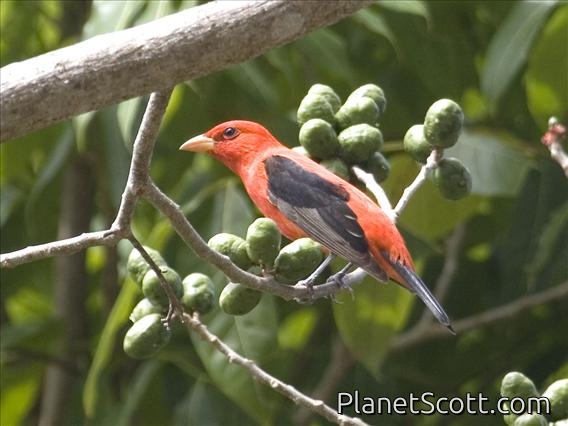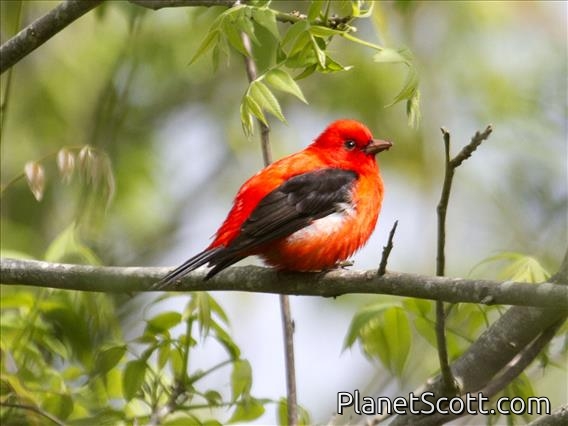Scarlet Tanager (Piranga olivacea)

Scarlet Tanager (Piranga olivacea) - Male

Scarlet Tanager (Piranga olivacea)


×



Scarlet Tanager (Piranga olivacea) - Male

Scarlet Tanager (Piranga olivacea)
About Scarlet Tanager (Piranga olivacea)
- Kingdom: Animals
- Phylum: Chordates
- Class: Birds
- Order: Perching Birds
- Family: Tanagers and Allies
The scarlet tanager is a medium-sized American songbird. Until recently, it was placed in the tanager family (Thraupidae), but it and other members of its genus are now classified as belonging to the cardinal family (Cardinalidae). The species' plumage and vocalizations are similar to other members of the cardinal family, although the Piranga species lacks the thick conical bill that many cardinals possess. The species resides in thick deciduous woodlands and suburbs.
Source: Wikipedia
Lifelists
Visits
-
2009-03-09
Cana Station, Panama -
2009-03-19
Punta Patino, Panama -
2013-04-17
Brazoria NWR (UTC 108), United States of America -
2013-04-19
Bolivar Peninsula, United States of America -
-
-




